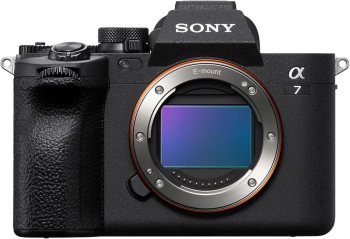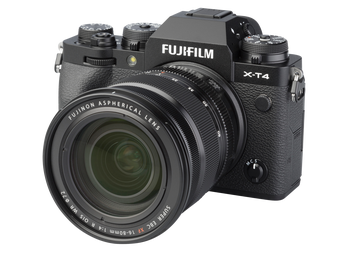- Great image quality
- Superb autofocus
- High-quality 4K video
- Lightweight and portable
- Compact and lightweight
- Excellent image quality
- Stabilized video
- User-friendly controls
- High-speed shooting
- Limited lens selection
- Menu system can be complex
- Limited battery life
- APS-C sensor may not suit all
Sony Alpha a7 IV vs Fujifilm X-T4
The world of mirrorless cameras has revolutionized the way we capture images, offering a more compact and feature-rich alternative to traditional DSLR cameras. Two prominent models that have garnered significant attention in recent years are the Sony Alpha a7 IV and the Fujifilm X-T4. In this comparison, we'll delve into the features, performance, and design of these two cameras to help you decide which one is best suited for your photography needs.
Design and Build
The Sony Alpha a7 IV boasts a sleek and ergonomic design, with a magnesium alloy body that provides excellent durability and resistance to harsh weather conditions. Weighing in at approximately 659 grams, the a7 IV is relatively lightweight, making it an ideal choice for photographers who need to carry their gear over extended periods. The camera's grip is comfortable to hold, and the button layout is intuitive, allowing for easy access to key settings.
In contrast, the Fujifilm X-T4 features a more rugged and retro-inspired design, with a magnesium alloy body that exudes a sense of premium quality. Weighing around 607 grams, the X-T4 is slightly lighter than the a7 IV, but its dimensions are similar. The camera's grip is also well-designed, with a pronounced thumb rest and a tactile button layout that makes it easy to navigate.
Image Quality
Both cameras deliver exceptional image quality, but they differ in their sensor sizes and resolutions. The Sony Alpha a7 IV features a 33-megapixel full-frame Exmor R CMOS sensor, which provides excellent dynamic range, color accuracy, and low-light performance. The camera's ISO range spans from 100 to 51,200, making it suitable for a wide range of shooting conditions.
The Fujifilm X-T4, on the other hand, uses a 26.1-megapixel APS-C X-Trans CMOS sensor, which is designed to provide excellent image quality and fast autofocus performance. While the X-T4's sensor is smaller than the a7 IV's full-frame sensor, it still delivers impressive results, with excellent color rendition and a wide dynamic range. The camera's ISO range spans from 160 to 51,200, making it well-suited for various shooting scenarios.
Autofocus and Performance
The Sony Alpha a7 IV features a fast and accurate autofocus system, with 759 phase-detection points covering approximately 94% of the image area. This allows for quick and precise subject tracking, even in challenging lighting conditions. The camera's burst mode can shoot up to 10 frames per second, making it ideal for capturing fast-moving subjects.
The Fujifilm X-T4 also boasts an impressive autofocus system, with 425 phase-detection points covering the entire image area. While not as extensive as the a7 IV's coverage, the X-T4's AF system is still highly effective, with excellent subject tracking and face detection capabilities. The camera's burst mode can shoot up to 15 frames per second, making it well-suited for sports and wildlife photography.
Video Capabilities
Both cameras are capable of capturing high-quality video, but they differ in their resolutions and frame rates. The Sony Alpha a7 IV can record 4K video at up to 30p, with excellent color grading and stabilization options. The camera also features a variety of advanced video modes, including S-Log2 and HLG (Hybrid Log-Gamma), which provide greater flexibility during post-production.
The Fujifilm X-T4 can record 4K video at up to 60p, making it an excellent choice for capturing smooth and detailed footage. The camera also features a range of advanced video modes, including F-Log and HLG, which offer enhanced color grading and dynamic range capabilities.
Conclusion
In conclusion, both the Sony Alpha a7 IV and the Fujifilm X-T4 are exceptional cameras that offer a significant upgrade over traditional DSLR cameras. While they share some similarities, they also have distinct differences in terms of design, image quality, autofocus, and video capabilities. The a7 IV is an excellent choice for photographers who require a full-frame sensor, fast autofocus, and advanced video features. On the other hand, the X-T4 is ideal for those who prefer a more compact and rugged design, with excellent image quality and fast burst mode capabilities.
Ultimately, the decision between these two cameras will depend on your specific needs and preferences. If you're looking for a camera that can handle a wide range of shooting scenarios, from portraits to landscapes and sports, the Sony Alpha a7 IV may be the better choice. However, if you prefer a more compact and feature-rich camera with excellent video capabilities, the Fujifilm X-T4 is an excellent alternative to traditional DSLR cameras.


















